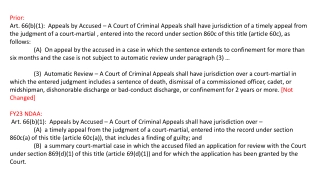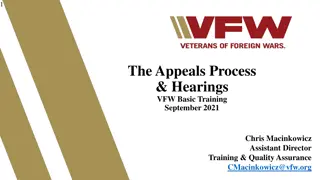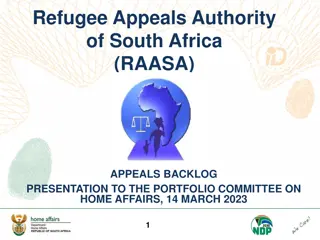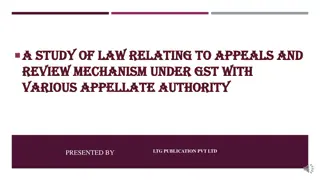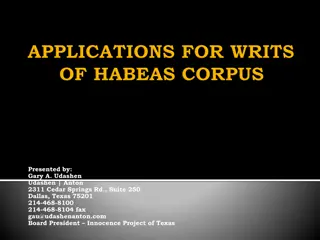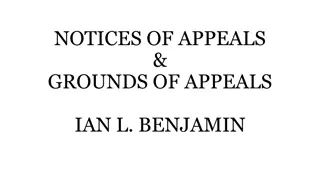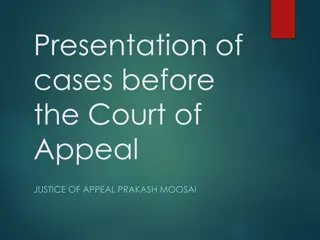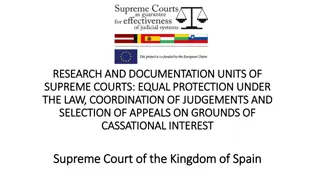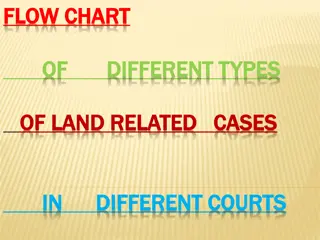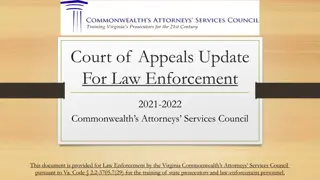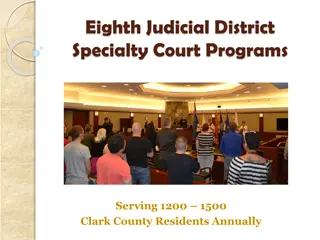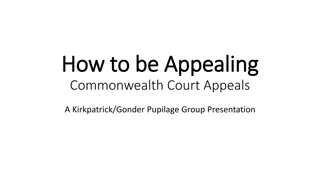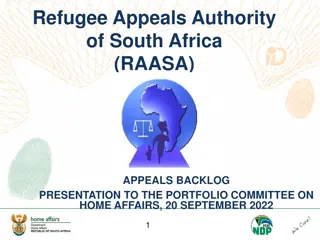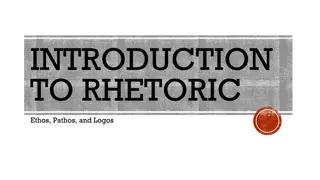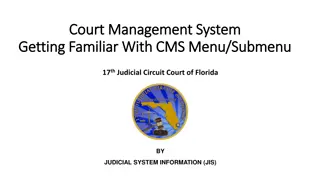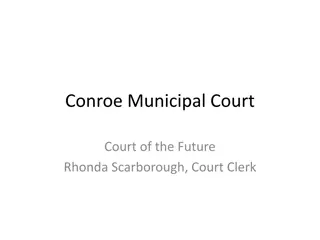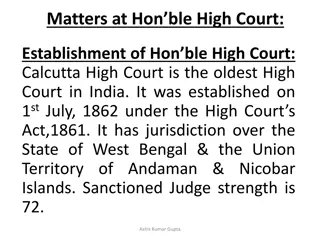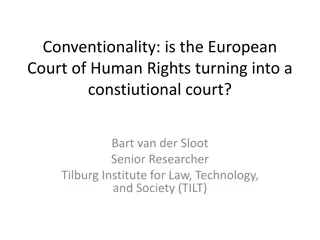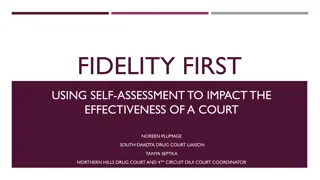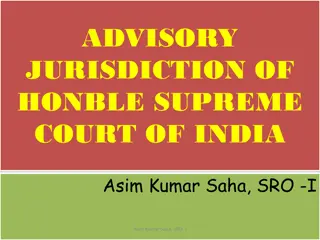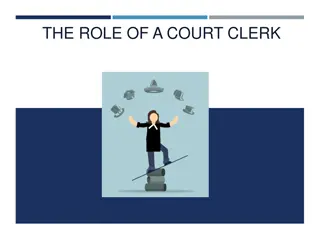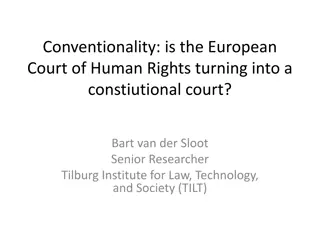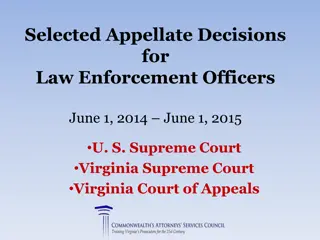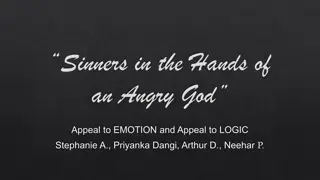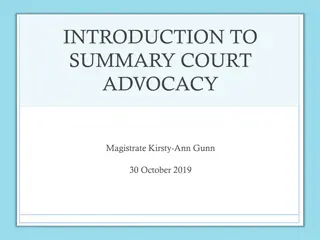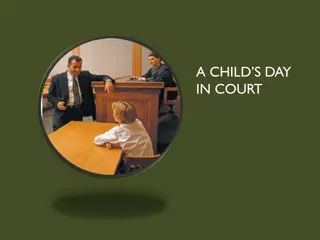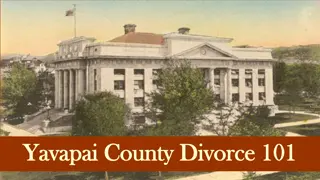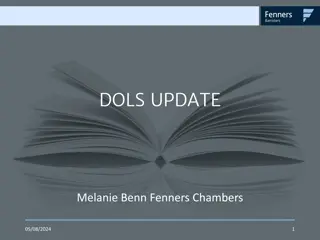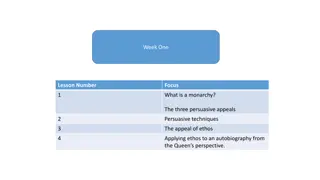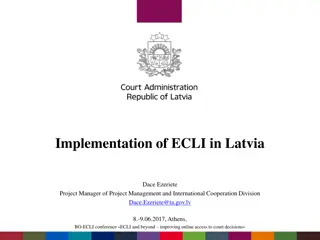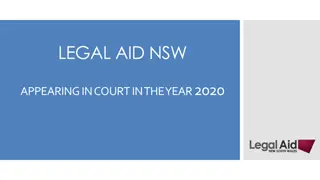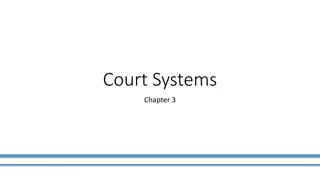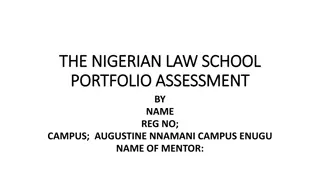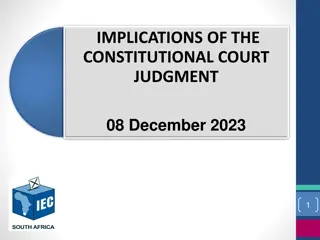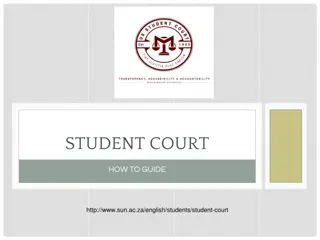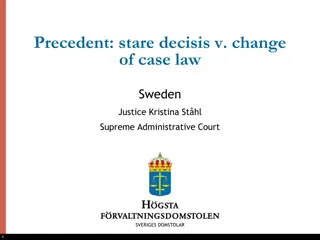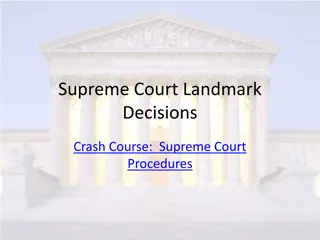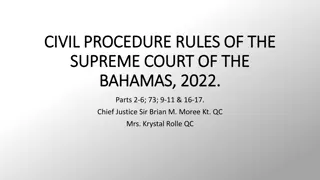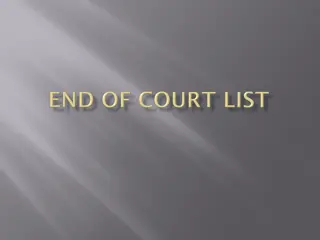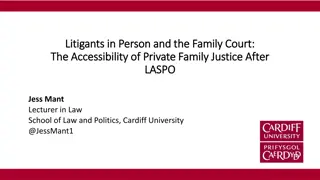Exploring Appeals and Court Systems: Chapter 13 Overview
This educational content delves into the intricacies of appeals in the legal system, covering characteristics of successful appeals, procedures at appeals courts, the role of precedent, jurisdiction determination, and an overview of federal, state, and local court structures. The material also discusses types of cases that can be appealed and the functions of state and local courts.
Download Presentation

Please find below an Image/Link to download the presentation.
The content on the website is provided AS IS for your information and personal use only. It may not be sold, licensed, or shared on other websites without obtaining consent from the author. Download presentation by click this link. If you encounter any issues during the download, it is possible that the publisher has removed the file from their server.
E N D
Presentation Transcript
Chapter 13, Sections 3 and 4 Appeals, Local, State and Federal Courts
Identify the characteristics of a successful appeal Identify Describe the procedures followed by an appeals court Describe In this lesson you Explain why precedent is used to help determine the outcome of an appeal Explain will: Explain how jurisdiction is determined in a court case Explain Describe the basic structure of federal, state and local court systems Describe
Types of Cases That Are Appealed Appeals are possible when the losing party can claim that an error of law affected the outcome. Mistakes on the part of the judge in applying the law or in allowing evidence are errors of law. Procedural due process ensures a fair trial by requiring that consistent procedures are followed. If a constitutional guarantee is violated, the case can be appealed.
Procedures at an Appeals Court The lawyers for each party present arguments for or against the trial court s decision. The judges may uphold the trial court s decision, reverse it, or send the case back for retrial. The ruling of the court is usually explained in a written opinion. If the judges are not in agreement, a majority opinion and a dissenting opinion will be issued. A concurring opinion is issued by judges who support the ruling but for alternate reasons.
Precedent and Stare Decisis Precedent is an important consideration for appeals court judges. Precedent, or stare decisis, makes the law predictable and provides stability. Precedents apply to all the courts below the court that rules in the case. Appellate courts may, rarely, overrule one of their earlier precedents.
Jurisdiction Jurisdiction in the court system refers to the authority of a court to decide a particular kind of case. Cases start in courts with original jurisdiction and may be appealed to courts with appellate jurisdiction.
State and Local Courts Each state has its own court system, which is where most legal cases are resolved. State courts hear a wide variety of cases, making them courts of general jurisdiction. State court systems generally have minor courts, general trial courts, and appeals courts. State judges are elected by popular or legislative election, appointment, or a combination of these.
Federal Courts Federal courts are courts of limited jurisdiction, hearing questions on federal laws or the Constitution. There are 94 federal judicial districts, each with a federal district court. These trial courts are grouped into 12 regional circuits with a federal court of appeals in each. Special federal courts handle issues such as bankruptcy, patent law, and veteran s issues. Federal judges are appointed by the president and confirmed by the Senate with lifetime appointments.
Other Courts Under the authority of the Constitution, Congress established the military justice system. The Uniform Code of Military Justice contains the rules governing the military. Violations of the UCMJ are heard in proceedings called courts-martial. Tribal courts hear both criminal and civil cases, although the jurisdiction of the courts is limited.
A case may be appealed when the losing party can claim that A.the court made an incorrect verdict. B.the judge gave the wrong instruction to the jury. C.the jury interpreted the facts of the case incorrectly. D.a key witness was not credible.
If the arresting police officer failed to advise the convicted person of his rights as required by law, the case may be appealed based on violation of A.stare decisis. B.precedent. C.original jurisdiction. D.procedural due process.
Which of the following shows the general sequence of a case traveling through the court system? A.trial court > appeals court > state or federal supreme court B.federal district court > state supreme court > U.S. Supreme Court C.trial court > state appeals court > federal appeals court > state or federal supreme court D.state trial court > federal district court > federal appeals court > U.S. Supreme Court
To hear appeals, courts must have A.concurrent jurisdiction. B.regional jurisdiction. C.appellate jurisdiction. D.original jurisdiction.
Which of the following describes an appeals court hearing? A.Lawyers from both sides call witnesses. B.The jury hears new evidence not presented in the original trial. C.A panel of justices decides the appeal. D.The original trial is conducted again in front of a new jury.
Which appeals court opinion states the decision of the court? A.verdict opinion B.majority opinion C.concurring opinion D.dissenting opinion
Judges who agree with the court's opinion but for different reasons may explain their position in a A.concurring opinion. B.dissenting opinion. C.minority opinion. D.divergent opinion.
Unlike a concurring opinion, a dissenting opinion expresses A.agreement with the court's decision. B.agreement with the reasons behind the majority opinion. C.disagreement with the reasons behind the majority opinion. D.disagreement with the court's decision.
Laws can be applied more uniformly from case to case because the legal system follows the principle of A.reasonable doubt. B.original jurisdiction. C.stare decisis. D.habeas corpus.
When an appeals court makes a decision, it creates _____ that lower courts must follow when deciding similar cases. A.procedural due process B.a precedent C.a judicial review D.an indictment
The jurisdiction of federal courts is limited to cases involving A.appeals from state courts. B.state or federal constitutions. C.federal laws or the federal constitution. D.federal or state governments.
State courts are courts of general jurisdiction, which means that A.they have no clearly defined jurisdiction. B.they can hear a wide variety of cases. C.they can hear the same cases that federal courts can hear. D.they can hear cases involving general principles but not specific laws.
State court judges may be selected by A.appointment or popular election, but not by election of the legislature. B.popular election or election by the legislature, but not by appointment. C.appointment or election by the legislature, but not by popular election D.popular election, election by the legislature, or appointment.
How are federal court judges selected? A.They are nominated by a party and elected by the people. B.They are appointed by the president and approved by the Senate. C.They are appointed by the House of Representatives and approved by the Senate. D.They are nominated by the president and elected by the people.
Courts-martial occur in A.federal courts. B.state courts. C.military courts. D.tribal courts.


